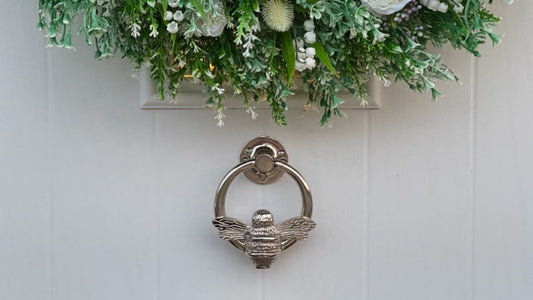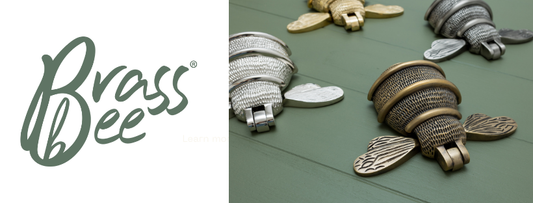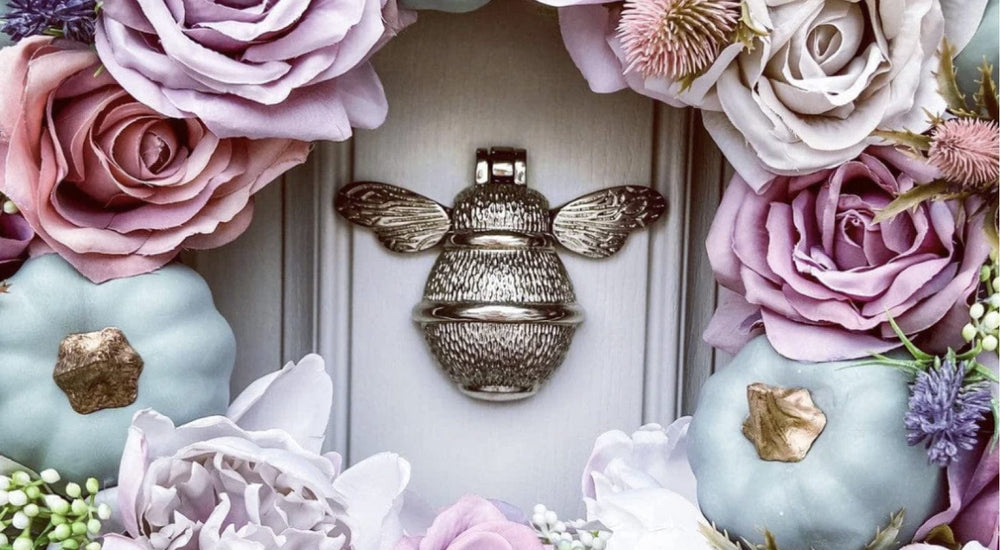A (Not So) Brief History of Door Knockers

The history of the door knocker is a rich and varied one, spanning millennia and continents. As a result, nowadays there are myriad animal door knockers available to oversee your home’s threshold. Your choice of brass door knocker animal gives great insight into the attitudes and interests of those that live there.
We touched on the development of the door knocker through the ages in our previous blog here. But with much more to learn, the subject demanded a deeper dive. Read on to discover: Exactly what does a lion door knocker symbolise?, What aid does a sanctuary knocker offer?, and much, much more!
Origins in the Dawn of Democracy
The ancient Greeks gave us advancements in politics, philosophy, literature, mathematics, and medicine to name just some of their achievements. While the Egyptians invented the first closing doors to provide improved security versus fabric hangings, the Greeks ran with the idea.
The more uncouth Spartans were happy to have their guests loudly announce their arrival. In Athens however, where sensibilities were arguably more refined, wealthy homeowners would attach a slave to the door with a heavy ring and chain to welcome guests upon arrival.
Unable to leave their post, these poor slaves might well fall asleep. Should this happen, there was a metal bar attached by a chain with which guests could rap upon the door and wake the slave. Of course, the potential of this bar to be used as a weapon was quickly realised by criminal types. And thus, the knocker design was quickly adapted to the classic ring-on-backplate form we still see today.
Where the Greeks led in innovation, the Romans followed and readily adopted. As the Roman Empire spread to the furthest reaches of Europe, so did door knockers come to adorn doors of the finest residencies across the continent. Backplates gave an opportunity to have a protective and decorative talisman overseeing your threshold, and blacksmiths responded accordingly.

Mythical Beasts and Medieval Heraldry
By the Middle Ages, the iconic lion’s head door knockers began to be seen, most notably in England. Sanctuary door knockers on cathedrals promised 37 days of asylum to criminals and refugees who managed to knock upon them. The lion sanctuary knocker of Durham Cathedral dates back to the 1100s and symbolises bravery, protection, strength, and nobility.
In addition to dragons and gargoyles, the medieval heraldry also incorporated other mythical creatures into door knockers. One such example is the dragonfly door knocker. However, there are also notable sanctuary knockers such as the one found at Saint Nicholas' Church in Gloucester. This particular knocker, dating back to the 1300s, features a serpent-like winged gargoyle with an old woman's head on its back.
Such hideous creatures were thought to drive away evil spirits and demons who might come to trouble the holy place. In doing so their guardianship would offer protection to all those faithful within.

Renaissance Flourish and Metalwork Mastery
The 1500s saw advances in all the arts across Europe, and the realm of smithing and related metalcrafts was no exception. Brass became the material of choice for any truly awe-inspiring door knocker, and matching brass door numbers completed the look.
Craftsmen saw the door knocker as another outlet to showcase their skill and artistry. The knockers themselves as well as the backplates were now formed of elaborate scenescapes and evocative tableaux. English and German designs were extremely complex, but most notable of all were the Venetian offerings.
In Venice, designers drew upon their rich Roman heritage and legends of antiquity. The stateliest homes of all boasted knocker designs featuring gods, nymphs, cherubs, and urns, all arrayed in picturesque countryside settings. Entire classical myths were played out upon doors for fortunate house callers to appreciate upon their arrival.

Diversification of Designs
By the late 1700s, craftsmen had the means and motivation to move away from symbols of classical myth and heraldry. The newly independent United States of America adopted the eagle as a knocker design of choice. Symbolising freedom, pride, victory, and a powerful connection to the divine from soaring high in the sky, this majestic bird epitomised the idealised American spirit.
Other animals representing local trades and customs also found their way onto door knockers by the 1800s. Fish knockers representing coastal industries were favoured on the homes of mariners in coastal regions of countries like Scotland and Portugal.
Elsewhere, around the Mediterranean and North Africa, the lady’s hand door knocker was extremely popular. The exact symbolism and origin of this iconic design are not definite, but most likely it’s the Hand of Fatima. Said to ward off the evil eye and identify the household as the residence of faithful Muslims, this style remains prevalent even today in countries with strong Moorish heritages.
In Georgian England, utility was key, and the late 1800s saw the creation of the doctor’s door knocker. Fashioned as a stylised hammer, it made as much noise as possible to rouse medics any time of day or night.
Around this time the bell pull was also invented, and these early doorbells slowly started to replace the door knocker. With the advent of electricity came cheaper and more convenient bells, and thus the knocker was slowly surpassed.
Nowadays a door knocker is as much for decoration as it is for function, if not more so. 3D printing and high-tech crafting methods mean designs can be both intricately realistic and affordable. The variety of emblems these methods can create allows you to find one that perfectly reflects your character and values.
Perhaps you wish to display your sense of teamwork, family values, and industry while bringing blessings of prosperity to your door. In that case, our classic brass bee door knockers are perfect for you. Even better, you can continue the theme throughout your household, with our range of matching animal drawer knobs.
Your home is an extension and reflection of your personality, and of all those that dwell there. By drawing on the rich and varied history of the door knocker, you can find the perfect design with which to adorn it. And once you’ve chosen the perfect emblem, it’s sure to bring delight and blessings to your household and visitors for many years to come.



